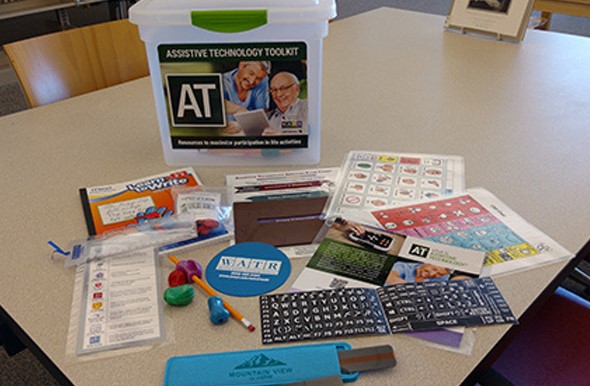DEFINING ASSISTIVE TECHNOLOGY
(Reprinted from AT3 Toolkit, https://at3center.net/publications)
An Assistive Technology is any item, piece of equipment, or product system, whether acquired commercially, modified, or customized, that is used to increase, maintain, or improve functional capabilities of individuals with disabilities (P.L. 10-34).
This broad definition means that assistive technology is anything that helps someone do something they couldn’t do because of a disability or functional limitation.
Assistive Technology can be:
- Homemade or store bought
- Used “as is” or modified
- Range from no cost to expensive
- Require no training or months of instruction
Examples of Assistive Technology include:
- Tennis balls placed on walker legs to make it easier to glide over carpet
- Paint used for wayfinding or as a memory aide – “Follow the blue line to the cafeteria”
- Text-to-Speech software that reads text to an individual with a print disability
- Assistive Listening devices that improve hearing. Devices include personal amplified, FM, Infrared, and Bluetooth systems as well as audio induction or hearing loop
- Speech Generating Device used to facilitate communication using a device to generate words and messages
DEFINING THE BROAD RANGE OF AT SERVICES
Assistive technology services assist in the selection, acquisition, or use of assistive technology.
Assistive Technology services include:
- Evaluation of the assistive technology needs of an individual with a disability or older adult experiencing functional limitations due to aging and evaluating the impact of providing AT and AT services in the appropriate environment
- Purchasing, leasing, or otherwise providing for the acquisition of AT
- Selecting, designing, fitting, customizing, adapting, applying, maintaining, repairing, replacing, or donating AT devices
- Coordination and use of necessary therapies, interventions, or services with assistive technology devices. For example, services associated with education or rehabilitation plans and programs
- Training or technical assistance for an individual with a disability, a family member, guardian, advocate, or authorized representative
- Training or technical assistance for professionals who serve individuals with disabilities, employers, or others providing services to employ or assist with major life functions
- Expanding the availability of access to technology, including electronic and information technology Act.
To read the full AT Toolkit, visit the AT3 Center Publications page


